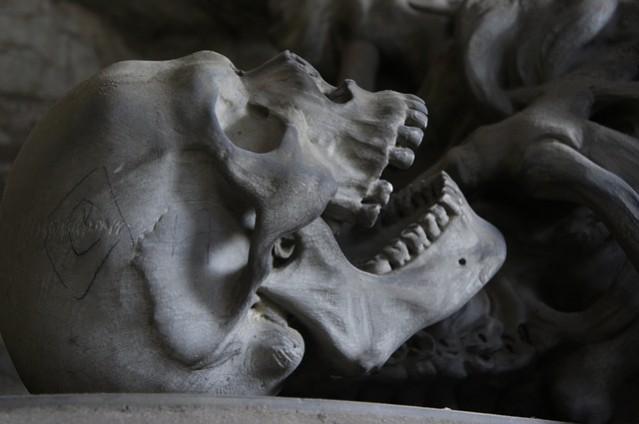
Archaeologists have come across a grim natural phenomenon called 'Coffin Birth' in a medieval grave in Italy.
Although coffin births were rare, there are some historical texts documenting this occurrence. The earliest document, which dates back to 1551, mentions a victim of the Spanish Inquisition, who was hanged to death. She gave birth hours after her execution, reported todayifoundout.com.
Coffin births are even rarer now because bodily fluids are removed and the corpse is treated with chemicals before burial.
The term coffin birth refers to the expulsion of a dead fetus from a mother's decomposing body. When a person dies, gases start building up in the corpse after a few days of decomposition. If the dead woman happens to carry a fetus, the gases push it out through a vaginal opening.
The horror doesn't end here. Gynaecologist Jen Gunter told Forbes: "The cervix shouldn't relax with death after rigor mortis disappears. I suspect that what happens is the pressure from the gas builds up, and the dead fetus is delivered through a rupture – it basically blows a hole through the uterus into the vagina, as the vagina is much thinner than the cervix."
The medieval grave, in question, was discovered in 2010 in Imola, Bologna. It had the skeleton of a woman and the remains of the fetus, which were just tiny bones, between her legs.
After studying the remains, researchers concluded that the burial belonged to the Lombard period (lasting from the 7th to 8th century A.D.). The research has been published in the journal World Neurosurgery.
The woman was probably in her mid-20s to 30s and was possibly buried near the 38th week of gestation. However, the sex of the baby was impossible to determine, reported Live Science.
Another shocking thing about the mother's skeleton was that there was a hole, measuring 4.6 millimeters (0.2 inches) in diameter, in the skull, which is probably an example of a primitive brain-surgery technique called trepanation.
"Our hypothesis is that the pregnant woman incurred preeclampsia or eclampsia [two pregnancy conditions involving high blood pressure] and she was treated with a frontal trepanation to relieve the intracranial pressure," the study revealed.
Trepanation was done by drilling or scraping a hole into the skull to relieve pressure. It is also believed that to trepanation cured several other diseases.
However, it is not clear if the woman died because of trepanation or some other complications.
















